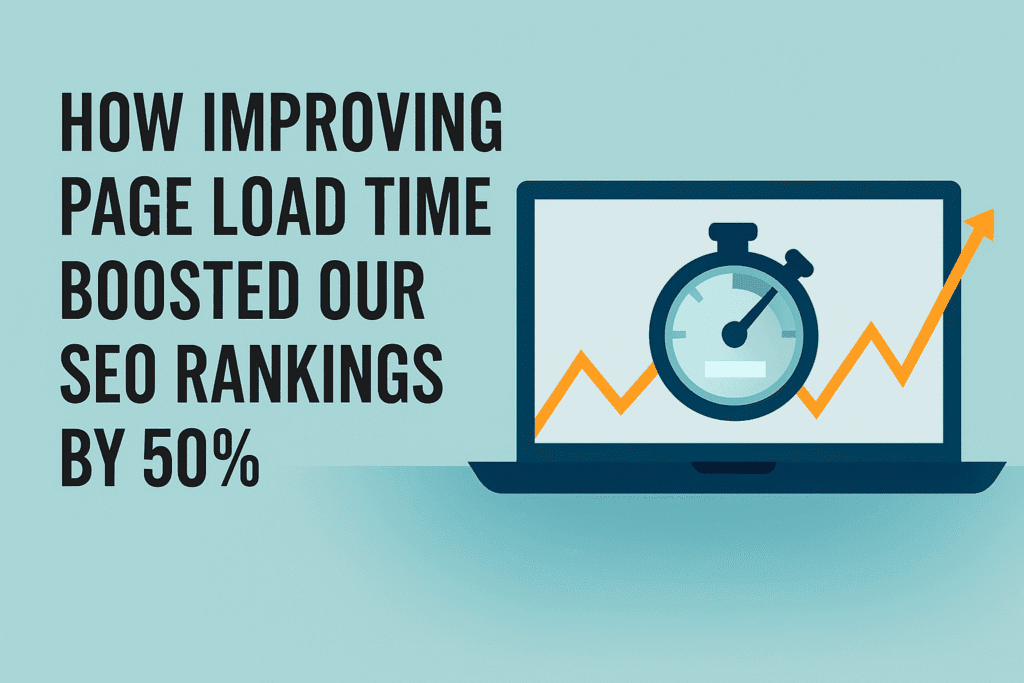53% of mobile users leave a site that takes more than 3 seconds to load.
That stat alone should make any business owner pay attention.
When clients came to us with declining search traffic, their first guess was content or backlinks. But no one suspected that page speed — something they barely thought about — was costing those rankings, traffic, and leads.
This post shares how we spotted the issue, fixed it, and watched rankings climb by 50%. If you’ve got a slow website and you’re wondering why your SEO isn’t working, read on.
Our Baseline: Where We Started
Our client’s website took 6.8 seconds to load on mobile. The bounce rate was 73%, and average session time was under 30 seconds.
That was a red flag.
They were publishing content, but nothing ranked. We used tools like Google Analytics and Search Console to check site performance. The verdict? Too slow, especially for mobile users.
If your site faces similar issues, it might be time to speak with a professional SEO agency in Dubai and run a full performance check.
The root problems:
- Images weren’t compressed.
- JavaScript and CSS were bloated and unminified.
- No CDN in place.
- No lazy loading.
- Poor hosting setup with slow server response.
All of this crushed user experience and destroyed search performance.
Audit and Diagnosis
We ran full audits using:
- Google PageSpeed Insights
- GTmetrix
- Lighthouse
Each showed issues with Core Web Vitals—especially Largest Contentful Paint (LCP) and First Input Delay (FID). Mobile pages were failing every major test. And let’s be real — if your mobile site stinks, your whole SEO does too.
We also spotted a weak Time to First Byte (TTFB). That told us the server itself wasn’t helping.
If your business site loads slowly or shows poor usability, it’s worth reviewing your web design setup or contact to any web design agency . Outdated layouts, slow-loading sliders, or bulky page builders often hold you back.
Implementing the Fixes
We rolled up our sleeves. Here’s what we tackled:
1. Image Optimization
We converted all images to WebP, reduced sizes, and served them responsively.
2. Lazy Loading
Only load what the user sees first. Everything else waits. This reduced initial load size by 40%.
3. CDN Setup
We implemented Cloudflare. Files now load from servers closest to the user, reducing latency.
4. Minifying JS and CSS
All scripts and stylesheets were compressed and deferred where possible.
5. Improved Hosting
Switched to a faster hosting provider with better uptime and HTTP/2 support.
If you’re unsure how to fix these on your own, our Abu Dhabi SEO company can handle it for you.
The Results: 50% Boost in SEO Rankings
Within 45 days, we saw a 50% jump in SEO rankings across tracked keywords.
Organic traffic increased by 64%. Bounce rate dropped from 73% to 39%. Session duration doubled.
We also noticed improved rankings for these target keywords:
- “affordable SEO services Dubai” → jumped from page 4 to page 1
- “web design Dubai” → moved into the top 3
- “seo specialist in uae” → ranked for the first time
This transformation was driven by one key shift: speed.
Want similar results for your business in the Kingdom? Talk to our SEO Company in Saudi Arabia about speeding up your website.
Key Learnings and Mistakes
Not everything went smoothly.
Here’s what worked — and what didn’t:
What Worked:
- Prioritizing mobile optimization
- Using fewer plugins, keeping the backend lean
- Compressing everything: HTML, images, scripts
What Didn’t:
- We didn’t test plugin conflicts beforehand
- Initial lazy loading setup broke the product gallery
- Switched CDNs midway, which caused a minor SEO dip
Tools that gave the best insights:
- PageSpeed Insights (clear suggestions)
- GTmetrix (performance waterfalls)
- Cloudflare Analytics (real-time performance)
If you’re running your own audits and hitting a wall, we’ve put together resources on our digital marketing services page to help you troubleshoot.
Final Takeaway
Website speed is no longer “nice to have.” It’s non-negotiable for SEO.
Think of it like this: your site is a shop window. If it takes too long to open, people walk away. Fix that, and more people stick around.
If your SEO isn’t working, test your speed first. If you’re not sure where to start, our SEO specialists can help guide the way.
Not sure how fast your site loads?
Run a quick test at GTmetrix or PageSpeed Insights. Or skip the guesswork.
Contact us for a free SEO audit — we’ll break it down for you and show where you’re losing traffic.

